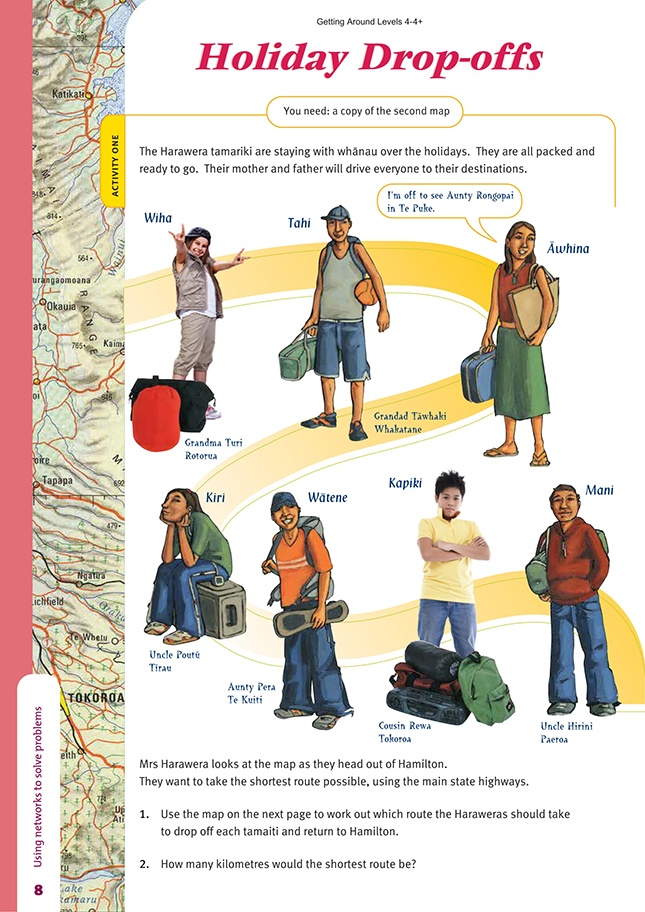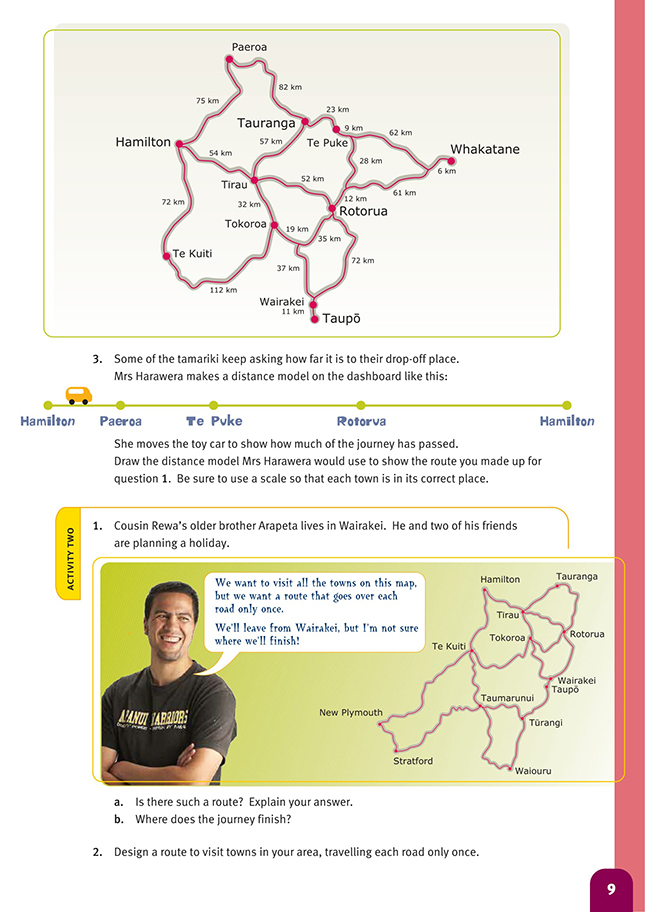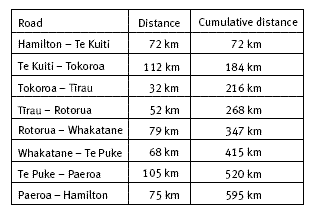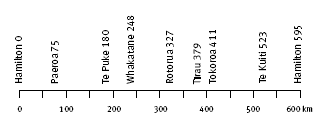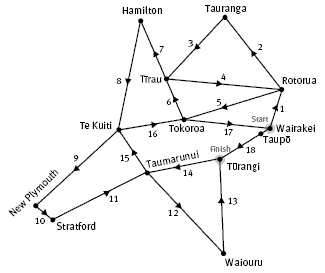This is a level 4 geometry and level 3 number activity from the Figure It Out theme series.
Click on the image to enlarge it. Click again to close. Download PDF (447 KB)
interpret a map to find the shortest route
use mental strategies to add kilometres distances
make a distance map using a scale
FIO, Levels 4-4+, Theme: Getting Around, Holiday Drop-Offs
Copymaster of Map
Activity One
The first thing to notice in this problem is that none of the whānau lives in Taupo, so there is no reason to go there. To find the shortest route through all the other towns, starting at Hamilton and returning to Hamilton, we apply these principles:
• Always move forward. Don’t enter loops that take you back to a town you have already visited.
• Where there is a choice of roads to the next town, choose the shortest.
The distance model in question 3 is an effective way of demonstrating the relative distance each passenger has to travel to reach their destination. A follow-up activity could involve the students planning a tour through their own region, as in Activity Two, or around their own city, and then plotting cumulative distance on a
number line, as in this question.
Activity Two
For this activity, the students can try out different possible routes on their photocopy of the map (see copymaster). The activity involves Euler paths. (See the teachers’ notes for All Fired Up in Disasters Strike! Figure It Out, Years 7–8.) There is an odd number of roads leading to and away from Wairakei. All other towns except Turangi have an even number of roads. So the end point for this journey is Turangi, and the
journey is certainly possible, as shown in the Answers. For the students to make up a similar circuit of towns in their own region, the condition to be met is that a maximum of two towns have an odd number of roads radiating from them. Where all the towns have even numbers of roads radiating from them, a circuit can start anywhere and end up back at the beginning. If two towns have odd numbers of roads radiating from them, one must be the start of the circuit and the other the finish.
If this condition is not met by the towns and roads in your region, discuss if and where a road could be built to make a circuit possible.
Cross-curricular links
Social Studies
You could ask the students to choose either Taupo or Rotorua as a location and to research a local legend associated with that place. The students then give a presentation that shows the impact of the place or environment on an individual or group of people at that time.
Achievement Objective
• demonstrate knowledge and understandings of how places reflect past interactions of people with the environment (Place and Environment, level 4)
Answers to Activity
Activity One
1. a. Answers may vary. The shortest route (starting at Hamilton and heading for either Paeroa or Te Kuiti) is:
.gif)
2. The total distance for the route shown above is 595 km.
3. Answers will vary. For the route shown above, with Paeroa the first stop, the distance model would be similar to this:
Activity Two
1. a. Yes. They will go through some towns twice and finish at a different town from where they start.
b. Tūrangi
2. Answers will vary.
